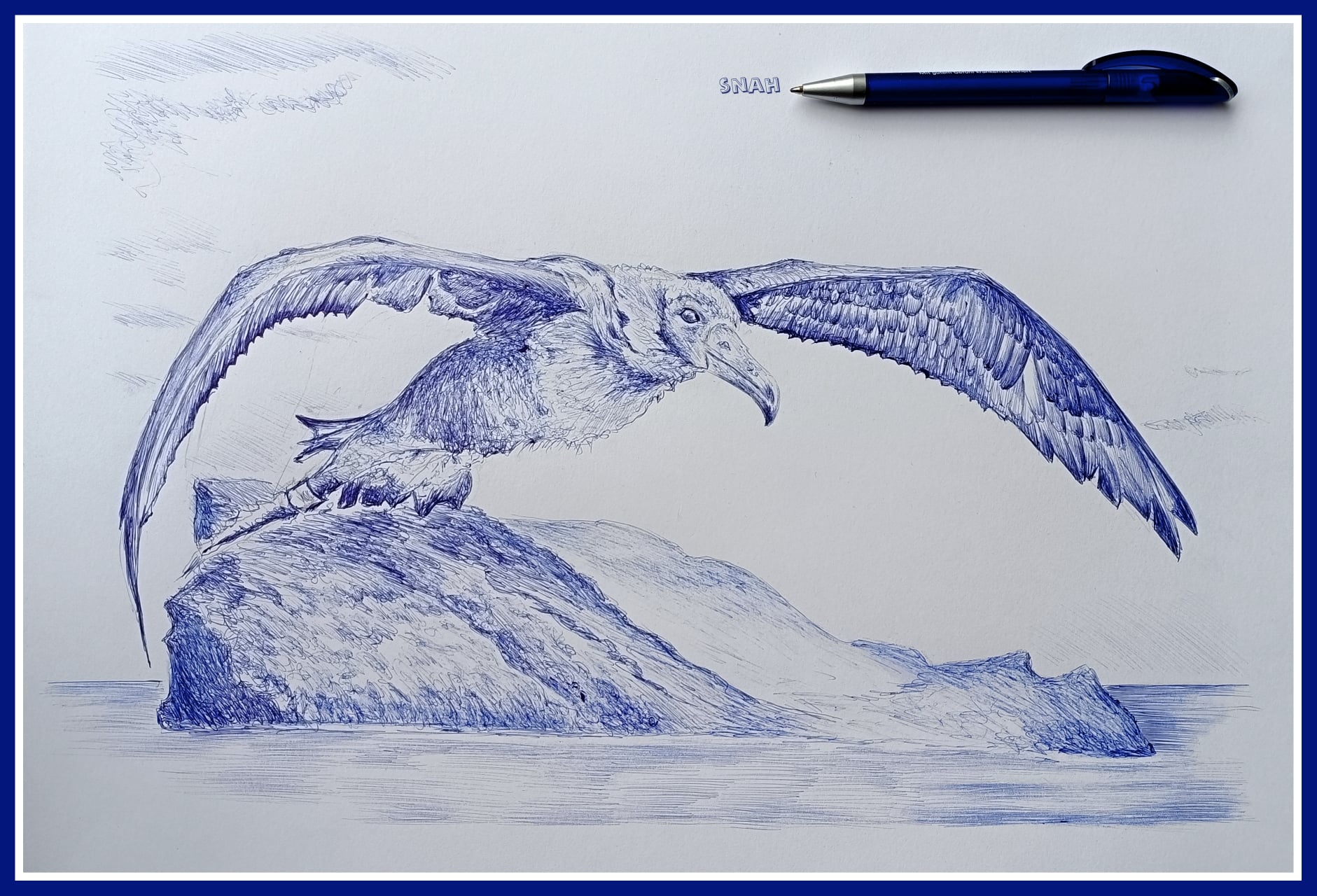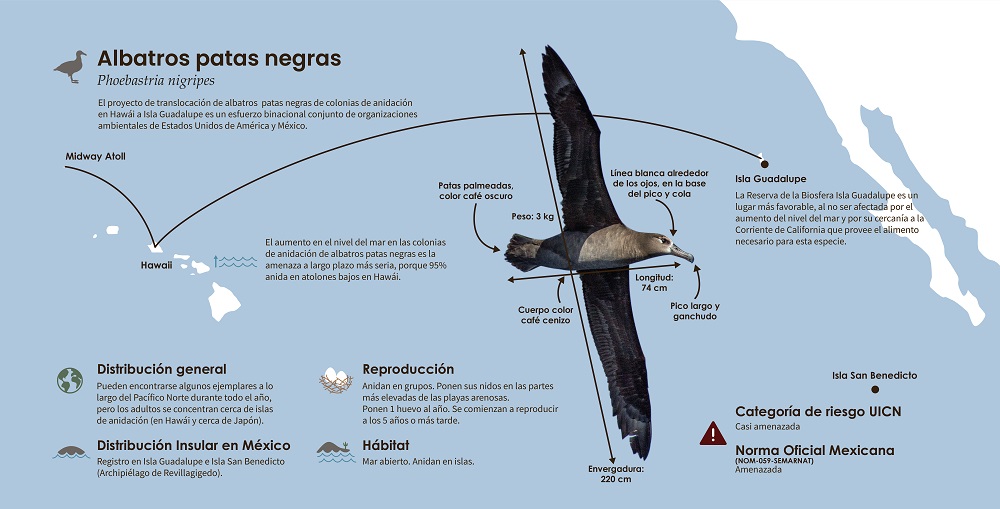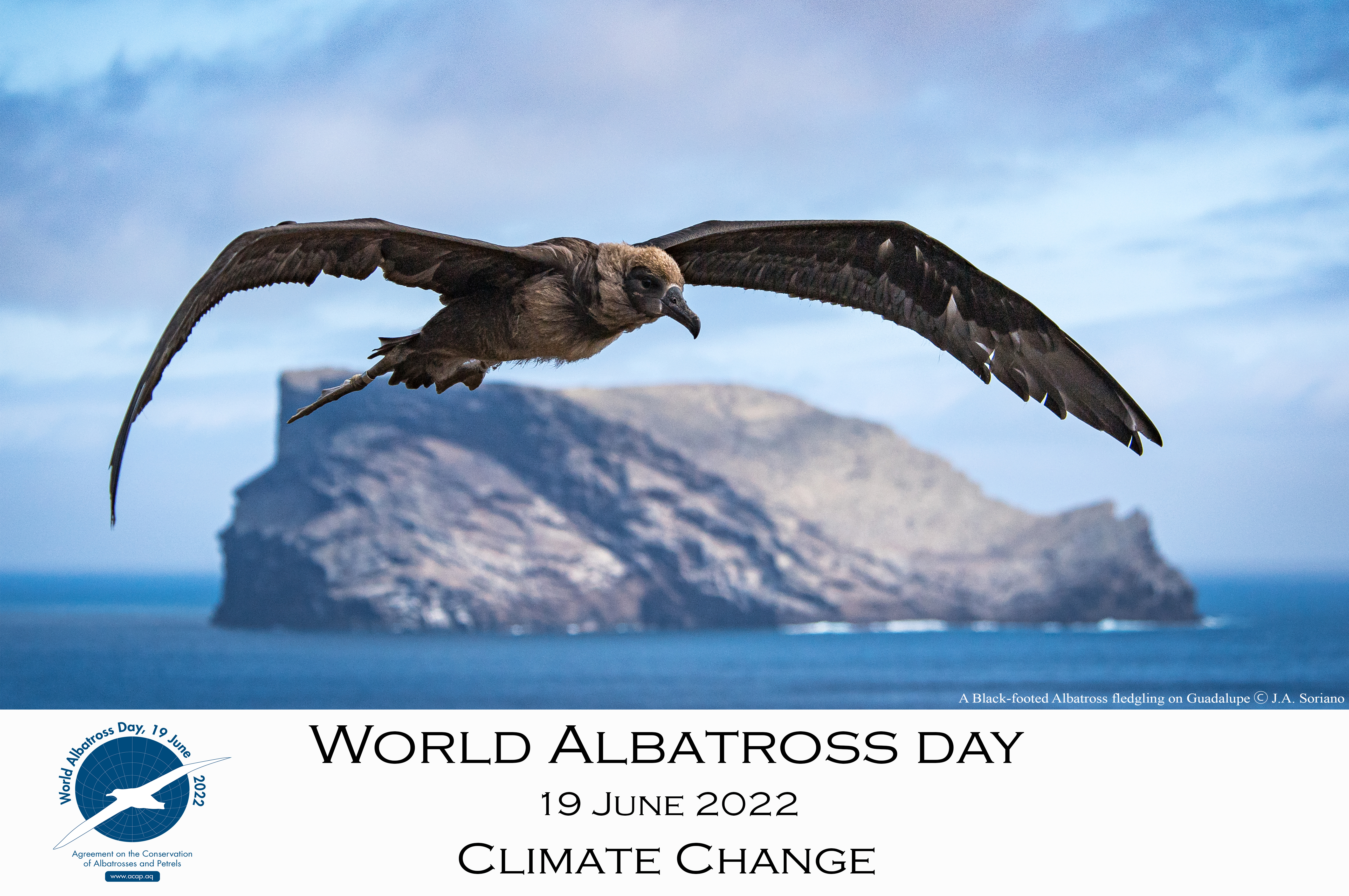
A translocated Black-footed Albatross close to fledging gets airborne on Isla Guadalupe in 2021, blue pen drawing by ABUN artist.Snah; after a photograph (see below) by J.A. Soriano, GECI
Thirty-five Black-footed Albatross Phoebastria nigripes chicks have successfully hatched in their foster nests on Isla Guadalupe in Mexico. Moved as eggs from Sand Island, Midway Atoll in the North-western Hawaiian Islands, 36 eggs arrived on Guadalupe on 12 January this year to be raised by Laysan Albatrosses P. immutabilis, a species which has bred on the island since the early 1980s. This effort follows on from a previous translocation from which 27 translocated chicks fledged last year from Isla Guadalupe, including ‘Snowflake’, the first to depart.

Transfer route, courtesy of GECI
With 97% of globally Near Threatened Black-footed Albatrosses breeding on low-lying atolls in the USA’s North-western Hawaiian Islands where they are at risk to climate change, the translocation project aims to establish a new colony on the high island of Guadalupe (a Biosphere Reserve) to help ensure the long-term survival of their species. Two NGOs, Hawaii’s Pacific Rim Conservation (PRC) and Mexico’s Grupo de Ecología y Conservación de Islas (GECI), have coordinated efforts with the federal governments of both countries to effect the translocations.
“When the eggs hatched, the chicks recognized Guadalupe Island as their home; after orienting themselves with the stars, they will return to the island as non-breeding adults in a period of three to five years. Later, in five to eight years, they will return to the island to find a mate and reproduce.”

Find more about the project in Spanish here. Read a news article on the transfer flight and watch a video (with Spanish text) on the translocation.
John Cooper, ACAP Information Officer, 25 April 2022

 English
English  Français
Français  Español
Español